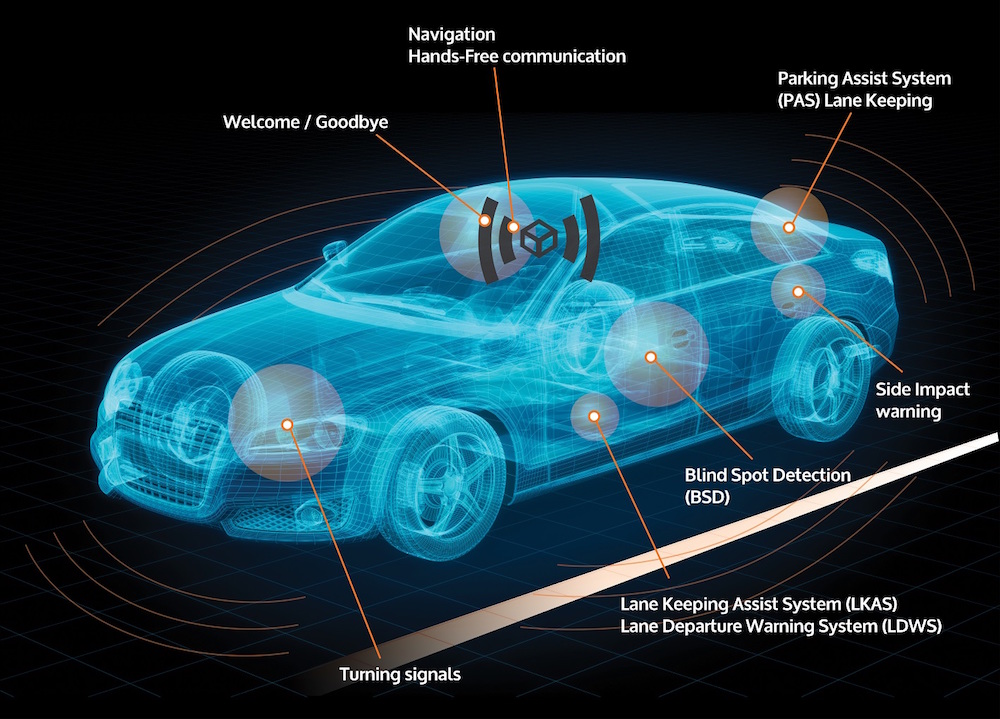Augmented Reality (AR) is typically understood as visual information overlaid onto real-world vision via a head-mounted lens; devices like Google Glass and the M100 Smart Glasses from Vuzix are some of the examples of this system. The sound experts at Arkamys (www.arkamys.com) have literally turned that idea on its ear. The system augments the environment around the driver of an automobile with sound, both with the specific audible signal and with its location.
Building on their knowledge of audio signal processing, Arkamys has designed the “3D Advanced Driver Assistance System” (3D-ADAS) system for installation in the cabin of automobiles that “spatializes” the alert sounds that your car makes – using multiple speakers within the car’s cabin to indicate the position and motion of the potential danger causing the alert.

Image Credit: ARKAMYS
The 3D-ADAS has been publicly demonstrated (including at the 2016 CES in Las Vegas this past January) but the tremendous potential was not truly clear to us until a recent drive from the New York City offices of the Architechnologist to a summit in Washington DC. Our vehicle for the trip introduced everyone in the car to both Lane Departure warnings and Blind-Spot Detection system. Our first experience with these systems was exactly as one would expect: once the driver figured out what the beeping noise indicated it became a tremendous benefit to the safety of the car and everyone in it. It was those first few minutes where I, as the driver, was confounded by the beeping that I could not decipher and that confusion was itself a danger. While I understood that I was being warned, I could not figure out what the danger might be (much less take any action to correct it) and that is where the 3D-ADAS solution would shine. While I was confused and searching the cockpit for some indication of what the alarm was, a car with 3D-ADAS would have lead me to the potential danger through a normal reaction to a sound coming from that direction.
The 3D Advanced Driver Assistance System is not currently in any vehicles but Arkamys has been speaking with car manufacturers about enhancing the functionality of their safety alert systems with 3D-ADAS.
 After considering the possibilities of 3D-ADAS in vehicles, the Architechnologist started to consider future uses for the technology. We immediately saw the potential for adding “spatialized” sound to walking directions on mobile devices – instead of just “In 100 feet, turn left,” the sound would be directed at you from the left earphone. And taking the idea a step further, sponsored content could be spatialized as well: a street a coffee shop on your right could call out to you from that side, inviting you in for a latte.
After considering the possibilities of 3D-ADAS in vehicles, the Architechnologist started to consider future uses for the technology. We immediately saw the potential for adding “spatialized” sound to walking directions on mobile devices – instead of just “In 100 feet, turn left,” the sound would be directed at you from the left earphone. And taking the idea a step further, sponsored content could be spatialized as well: a street a coffee shop on your right could call out to you from that side, inviting you in for a latte.